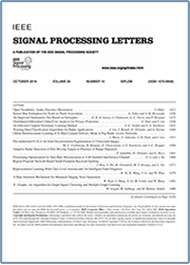Ensemble Stego Selection for Enhancing Image Steganography
Top Reasons to Join SPS Today!
1. IEEE Signal Processing Magazine
2. Signal Processing Digital Library*
3. Inside Signal Processing Newsletter
4. SPS Resource Center
5. Career advancement & recognition
6. Discounts on conferences and publications
7. Professional networking
8. Communities for students, young professionals, and women
9. Volunteer opportunities
10. Coming soon! PDH/CEU credits
Click here to learn more.
Ensemble Stego Selection for Enhancing Image Steganography
In this paper, we propose an enhancing steganographic scheme by random generation and ensemble stego selection. Different from existing steganography that only focuses on distortion function designing, our scheme considers both distortion model and optimized stego generation. In specific, for given cover, we firstly train an universal steganalyzer to calculate its gradient map, which is referenced to randomly adjust cost distribution of this cover. Multiple candidate stegos are sequentially generated by combining adjusted cost and syndrome trellis coding. Furthermore, we build an ensemble selection mechanism to effectively determine the candidate that is closest to the statistical characteristics of cover image as the final steganographic image. Comprehensive experiments demonstrate that compared to existing state-of-the-art schemes, our scheme can significantly boost the anti-steganalysis capability.
Steganography aims to embed secret information into digital medias for covert communication, e.g., digital images, digital audios and videos. Most current high-undetectable steganography always tends to appropriately define a distortion function and then combine syndrome trellis coding (STC) [1] to achieve practical steganographic algorithms [2], [3] approaching the theoretical payload-distortion bound. Nevertheless, these minimizing distortion-based steganography usually employs a heuristically-defined distortion function to calculate the cost pixel by pixel. Since the cover elements of natural images are correlated with each other, it may be more appropriate if more correlation of adjacent elements can be involved when designing distortion functions [4]–[5][6][7]. Another thread of solution concerning minimizing distortion-based steganography is deep learning-based distortion function designing [8]–[9][10][11][12]. Instead of a priors knowledge-based heuristic distortion functions designing in traditional adaptive steganography, deep learning-based steganographic methods automatically learn by simulating the competition between a generator and a discriminator in a generative adversarial network (GAN).
Generally, either heuristically-defined distortion function or deep learning-based distortion function can provide an optimized distortion model to guide secure steganography. However, these schemes mainly focus on individual distortion model designing, they rarely consider the choice of secure stego image and too little work has been devoted. Chen et al. [13] firstly proposed a new steganographic post-processing (SPP) scheme by reducing the image residuals between the cover and the stego. Inspired by adversarial sample-based steganography [14], Song et al. [15] designed a new stego generation and selection (SGS) mechanism to further enhance steganography security. Nevertheless, these above schemes have a big problem, that is, high-dimensional feature residual easily ignores the influence of some important features, resulting in finally determining an inappropriate stego image.
SPS Social Media
- IEEE SPS Facebook Page https://www.facebook.com/ieeeSPS
- IEEE SPS X Page https://x.com/IEEEsps
- IEEE SPS Instagram Page https://www.instagram.com/ieeesps/?hl=en
- IEEE SPS LinkedIn Page https://www.linkedin.com/company/ieeesps/
- IEEE SPS YouTube Channel https://www.youtube.com/ieeeSPS












